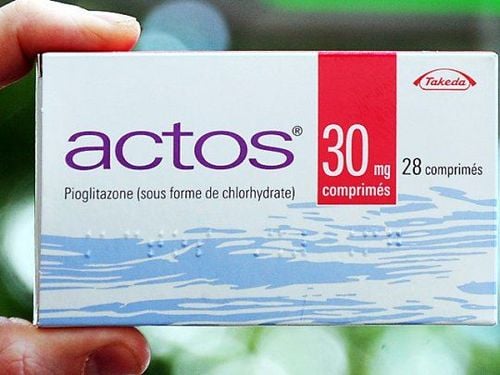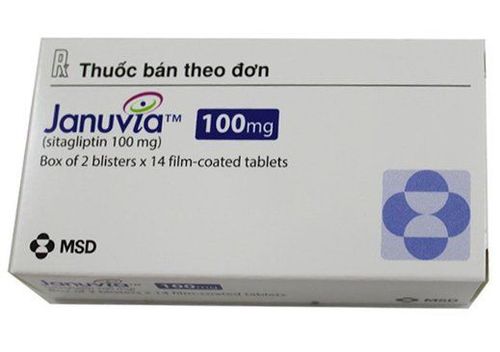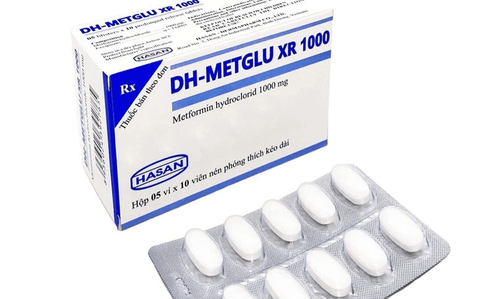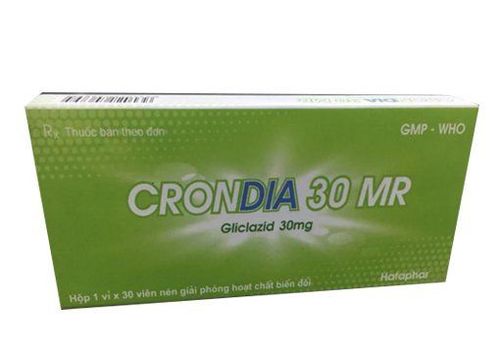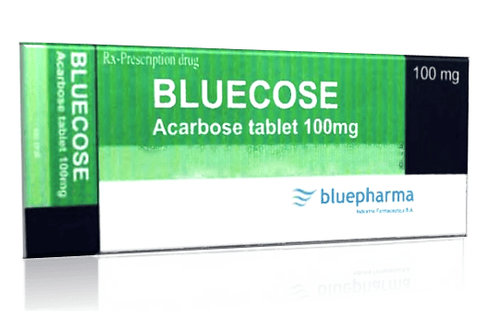This is an automatically translated article.
Diabetes is a disorder of carbohydrate metabolism, causing increased blood sugar. When suffering from the disease, to control blood sugar well, the patient needs a combination of medication and a reasonable diet and exercise. Today, thanks to scientific progress, many new generation diabetes drugs are used effectively for patients.
1. Diabetes Overview
Diabetes is a condition in which blood sugar levels rise above the permissible limit. The cause of the disease is that the body has trouble managing insulin, it may be not producing insulin or the insulin is not working properly. Insulin is produced by the pancreas to help the body use glucose from food. Insulin binds to receptors on cells and moves glucose from the blood into the cells inside the body, where they are used as energy for basic bodily functions. But if your body doesn't make enough insulin or doesn't use it properly, glucose stays in your blood and can't get into cells for energy. This leads to high blood sugar, which is harmful to many parts of the body.
Depending on the causative factor, it is divided into two main types of diabetes
Type 1 diabetes: People with type 1 diabetes cannot produce insulin on their own. Although the only drug used to treat type 1 diabetes is insulin, it comes in different formulations. Type 2 diabetes: People with type 2 diabetes can still make insulin, but the body can't use it properly. People with type 2 diabetes have more medication options than type 1. Some of the more commonly used oral medications in the past include: Metformin ; alpha-glucosidase inhibitors such as acarbose; Sulfonylureas such as glipizide...
Certain types of injectable insulin: insulin aspart; insulin degludec; insulin glargine...
2. New drug treatment options for diabetes
Thanks to scientific progress, many new generation diabetes drugs have been born including oral - injectable drugs and have been shown to be more effective than older generation drugs. This gives patients with the disease more options for treatment.
2.1 New Generation Diabetes Drugs New Oral Diabetic Drugs: Used to Treat Type 2 Diabetes.
Steglatro: This is the only new drug that contains only one drug, the ingredient is ertugliflozin, which is an inhibitor. sodium-glucose agonist mechanism 2. Sodium-glucose agonist 2 is a transporter that plays a major role in reabsorption of glucose back into the circulation, from glomerular filtration. Inhibition of this sodium-glucose 2 agonist reduces renal reabsorption of filtered glucose and increases urinary glucose excretion. Xigduo XR: Available as a 24-hour extended-release oral tablet, it was approved for use in 2014. Xigduo XR is a combination of metformin and dapagliflozin. Metformin makes body tissues more sensitive to insulin. Dapagliflozin is also a sodium-glucose 2 agonist inhibitor, thereby preventing some of the glucose in the system from returning blood through the kidneys and causing the body to excrete more glucose in the urine. Synjardy: Available as an oral tablet, approved for use in diabetics in 2015. It is a combination of the drugs metformin and empagliflozin. Empagliflozin belongs to the class of sodium-glucose agonist 2 inhibitors, which work in a similar way to dapagliflozin. Glyxambi: Glyxambi was approved for use in 2015, a combination of drugs that are linagliptin and empagliflozin. Linagliptin works by blocking the breakdown of certain hormones in the body that help the pancreas produce and release insulin. This also slows digestion and the release of glucose into your bloodstream. Steglujan: Steglujan is an oral tablet, approved in late 2017. This is a combination of two drugs, ertugliflozin and sitagliptin. Ertugliflozin works by the same mechanism as empagliflozin. Sitagliptin works similarly to Linagliptin, helping to prevent the breakdown of certain hormones in the body that help the pancreas produce and release insulin, slowing the digestion and absorption of glucose into the bloodstream. Segluromet: Segluromet was approved for use in late 2017. It combines ertugliflozin and metformin. New injectables: New brand-name injections used to treat both type 1 and type 2 diabetes. These injectables contain an insulin, a GLP-1 agonist, or possibly both . Different types of injectable insulin act as a replacement for insulin that the body doesn't make or can't use properly. Glucagon-like peptide-1 (GLP-1) receptor agonists help the pancreas secrete more insulin when glucose levels are high. They also slow the absorption of glucose into the bloodstream during digestion.
Tresiba: Tresiba was approved in 2015. Used to treat both type 1 and type 2 diabetes. Tresiba is an insulin that lasts up to 42 hours. This is longer than the regular insulin used. The drug is for injection once daily. Basaglar and Toujeo: Basaglar and Toujeo are two new forms of insulin glargine. They are for the treatment of both type 1 and type 2 diabetes, and both are given once daily. Basaglar is a long-acting insulin medication. Toujeo is a more concentrated form of insulin glargine. Xultophy: approved in 2016. Only used to treat patients with type 2 diabetes. Xultophy is injected once daily. Xultophy combines insulin degludec, a long-acting insulin, and liraglutide (a GLP-1 agonist). Soliqua: Approved for use in 2016. It is only used to treat type 2 diabetes and is injected once daily. Soliqua combines the insulin drug glargine with lixisenatide, (a GLP-1 receptor agonist). Ozempic: A drug used only to treat type 2 diabetes, has been approved. Ozempic is a GLP-1 agonist called semaglutide. The drug is injected once per week. Adlyxin: Adlyxin was approved for use in 2016. It is only used to treat type 2 diabetes. Adlyxin is a GLP-1 agonist called lixisenatide. Adlyxin is injected once daily. Ryzodeg: Ryzodeg was approved for use in 2016 but is not yet available. It is used to treat both type 1 and type 2 diabetes. Ryzodeg combines insulin degludec with insulin aspart. The drug is injected once or twice daily. In addition to these new diabetes drugs, some of the newest diabetes drugs are currently in development. These medications include:
Oral-Lyn: It comes in the form of a rapid-acting insulin spray. It is being studied to treat both type 1 and type 2 diabetes. Insulin nebulizer: This aerosol generator contains a liquid insulin that is inhaled into a meal. It was studied to treat both type 1 and type 2 diabetes.
3. Things to consider when choosing a drug
Effective conventional diabetes drugs have been on the market for many years, new drugs can provide great benefits that most commonly used drugs do not have before.
However, it is important to remember that we may not be aware of all the side effects and interactions of new drugs. Also, newer drugs can be worth more than older drugs.
It is important that you talk to your doctor if you are considering new diabetes drug options. At that time, the most suitable advice will be given to be able to choose.
Hope through the article you have had useful information about choosing new treatment drugs for diabetes.
Please dial HOTLINE for more information or register for an appointment HERE. Download MyVinmec app to make appointments faster and to manage your bookings easily.
Reference source: healthline.com



